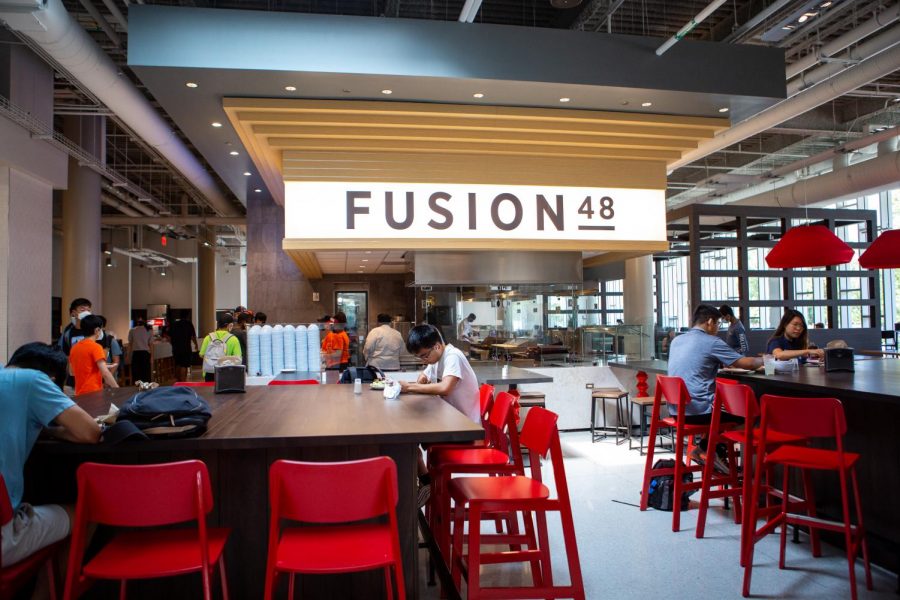Opinion | University meal plans should partner with local restaurants
The Fusion48 asian cuisine restaurant sits inside of the new Illinois State Residence Hall dining area on Aug. 27. Columnist Chiara Awatramani believes University meal plans should partner with local restaurants in the area.
Sep 8, 2021
Dining hall food, through its varying degrees of palatability, fuels students through their day. Usually, a decent selection of food is available — ranging from noodles, pasta to maybe a few outrageously plain vegetables. Although some students may be satisfied with these meals, or at least try to be, others would rather have more choice: in both what food they have access to and where they get said food.
It would be convenient and economical for the University to partner with local restaurants so students could cash in their meal swipes for food. These restaurants could range anywhere from Subways to Bangkok Thai.
Many universities have partnerships with restaurants — providing evidence that students, indeed, like this style of meal plan. The University of Washington at Seattle partners with Pagliacci Pizza and Starbucks. The University of Pittsburgh partners with Chick-fil-A.
While the dining halls provide convenience, as they are on campus, they do not help those who are off campus looking for a bite to eat. Convenience — for students taking an average of five classes plus maintaining a part-time job and participating in RSO’s — is essential. Pairing the dining hall plan with local restaurants would be convenient for students because they could eat at different locations off-campus. Who wouldn’t want that flexibility?
Partnering with a restaurant would also be economically beneficial to students because the University could negotiate a deal with the partnering restaurant. This deal could offer discounts to students who use the University’s meal swipes at these certain places. This would incentivize students to eat at these restaurants, which would prove economically favorable to the restaurant.
Get The Daily Illini in your inbox!
Also, students can select how much money to spend on their food as opposed to a set $10 for breakfast, $13 for lunch and $16 for dinner. To put these prices into perspective, $16 at Subway can buy three BLT footlong sandwiches and at Chipotle, two steak burritos: a lot more than an average student needs for one meal. Hence, if a student wanted to eat one burrito, they would only spend half the price that they would be eating at the dining halls.
What mainly makes this partnership attractive, however, is that we know students choose to eat at restaurants. In fact, over half of students eat out once a week, with the main reasons for eating off campus being wanting delicious food that restaurants provide due to fresh ingredients and elaborate recipes, flexible location through on-and off-campus food options and a specific type of food, not just what the school determines for that day. Clearly, students are on the lookout for better food options than lackluster dining halls provide them.
Since students enjoy eating at restaurants, more students would be inclined to remain with the dining plan even when living off-campus. This would be beneficial for the University, as they would be getting some of the money students usually spend elsewhere.
Implementing a partnership with a restaurant not only would benefit the students of the University by offering much-needed flexibility, cost options and food choices, but also, the University would profit through the additional students drawn to this type of meal plan.
Chiara is a sophomore in LAS.






